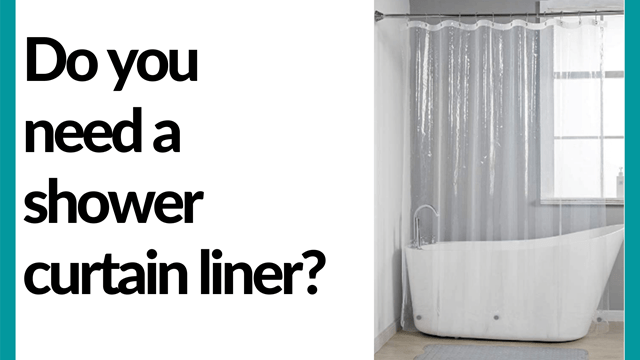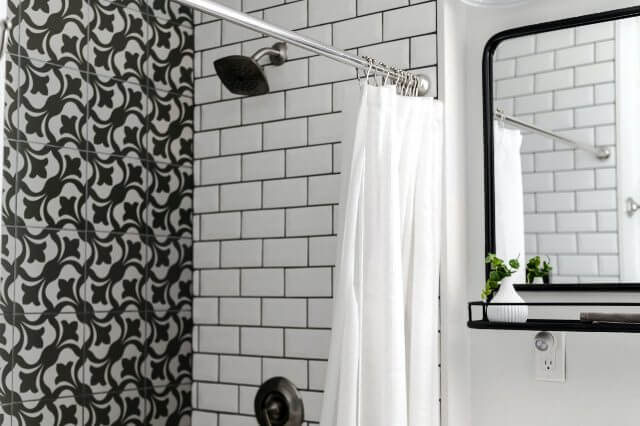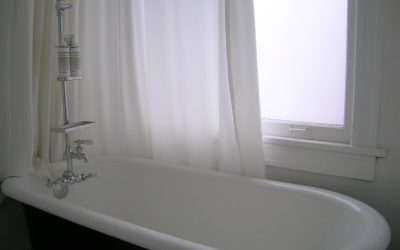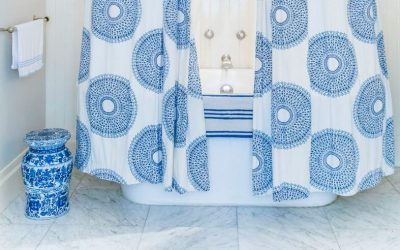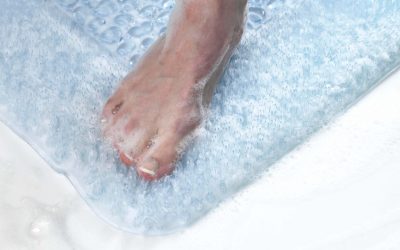Do you need a shower curtain liner? You will often hear this question among shoppers when asked whether or not they want to add a shower curtain liner into their cart.
This is not surprising because many people do not have the slightest idea what a shower curtain liner is. They often assume that just having a shower curtain is enough to protect their bathroom floor from water that splashes out.
Of course, this is not the case and in this article, we are going to explain to you what a shower curtain liner is. We shall also talk about why you need one and how to pick the best type for your bathroom.
What really is a shower curtain liner?
A shower curtain liner is a waterproof fabric, often plasticized material, which goes under your regular shower curtain.
It serves as a barrier between the curtain and the floor, which keeps water from getting out onto the floor.
This helps to protect the floor against water damage and prevents the growth of mold and mildew.
While some people use them as shower curtains, liners are not intended to be used in place of a shower curtain.
Benefits of using a shower curtain liner
When you’re shopping for shower curtains, it’s easy to overlook the importance of a liner.
So here are some of the reasons why you need one.
-
Protect the bathroom floor
A shower curtain is designed to keep water from getting out onto your bathroom floor and damaging it. However, without a liner, the water will soak through that fabric and drip all over your floor.
Therefore, you need to add a shower curtain liner since it is specially designed to protect the floor from the water that may leak out of the bottom of your shower curtain.
See also: Shower curtain for walk in shower
-
Keep water inside the tub or shower
A curtain liner keeps water from splashing out of the tub. This not only ensures a clean bathroom but also prevents the risk of slipping and causing injury due to the water spills on the floor.
-
Prevents the growth of mold and mildew in the bathroom
Liners also help to keep mildew and mold away from your walls and floor since no water will splash on them.
-
Enhances the appearance of the bathroom
Liners come in different colors, materials, and patterns. You can buy the colors and patterns you desire, which makes it easy to coordinate with any bathroom decor.
See also: Best anti-slip bath and shower stickers
Which type of liner should you buy?
The three major types of shower curtain liners include PEVA, fabric, and vinyl/plastic.
The best suitable type for your bathroom will depend on several factors such as cost and how often the bathroom is used.
-
Fabric Liners
For most purposes, fabric liners are just fine because they’re inexpensive. Also, they can easily be laundered by a machine wash/dryer or hand washed with soap and water and then air-dried.
-
Plastic/Vinyl liners
Plastic/vinyl liners also work well if you need an extra layer of protection against mold growth due to high humidity levels especially if your bathroom gets steamy.
Most people go for this type because they don’t need any special care or attention in order for them to last and stay waterproof as their fabric counterparts do.
However, the drawback is that they don’t typically last as long as fabric liners. So they need to be replaced quite often (typically 2 years).
-
PEVA liners
PEVA liners on the other hand are your best bet if you want something that will shed water well. This is based on the fact that PEVA has pores that trap moisture much better than the other two types of materials.
Each type of liner presents its own pros and cons so look into them before making your purchase.
See also: How long should a shower curtain be?
How to choose the right shower curtain liner for your bathroom
There are a lot of different shower curtain liners on the market today, which can make choosing one a difficult task.
For most people, the different types of liner materials may not make much difference in how they feel about their purchase. This is because all three types do an equally good job at keeping water inside the tub and away from your bathroom floor.
However, if you have any sensitivity to specific materials like mold or mildew then it is important that you choose a liner that is not prone to this so as not to aggravate your condition further.
For instance, PEVA liners come highly recommended since they are designed to be mold and mildew-resistant.
Nonetheless, it all boils down to what you’re looking for in a liner and your personal preferences. If you need one that will last through many washes and is easy to clean then we recommend 100% Polyester Fabric Liners. They are made of polyester fabric which means they won’t shrink or fade over time as cotton liners do.
But if you don’t want to spend on an expensive product yet still want something durable enough for heavy use, then go with the Vinyl Shower Curtain Liner. It’s cheap but not as long-lasting as other options so keep this in mind before deciding!
See also: Best DIY refinishing kit for bathtub
How do I install a shower curtain liner in my shower?
Installing a shower curtain liner is not difficult, but it can be frustrating. The key to success is following the installation instructions closely and taking your time with each step.
If you do that, then installing your new liners should only take about 15 minutes per side of the tub or shower stall.
Follow these four steps for successful installation:
- First, make sure to buy the right size shower curtain liner for your shower or bathtub
- Ensure the curtain rod is well fixed and secure
- Iron out any wrinkles in the liner
- Insert all the curtain hooks or rings through the grommets along the upper edge of the liner
- Hang the liner by attaching the hooks or rings onto the shower curtain rod.
- Place the lower part of the liner inside the tub or shower stall so as to keep the water inside when taking a shower.
See also: Why does my shower curtain stick to me?
Conclusion
Do you need a shower curtain liner? Yes, you do.
You might think that shower curtain liners are unnecessary, but they can actually help keep your bathroom cleaner.
The main and most important reason is that liners prevent soap scum and water from seeping through the shower curtain or splashing out which means you need to clean less often.

